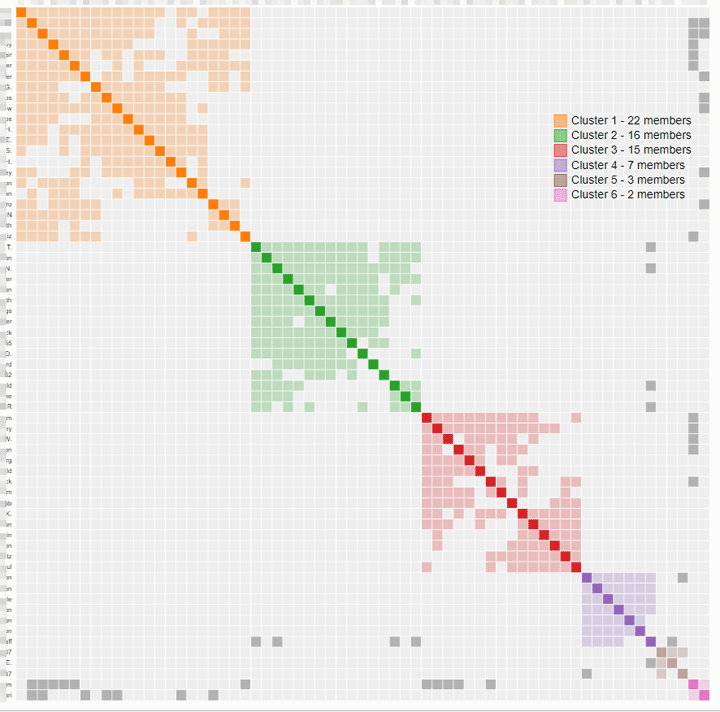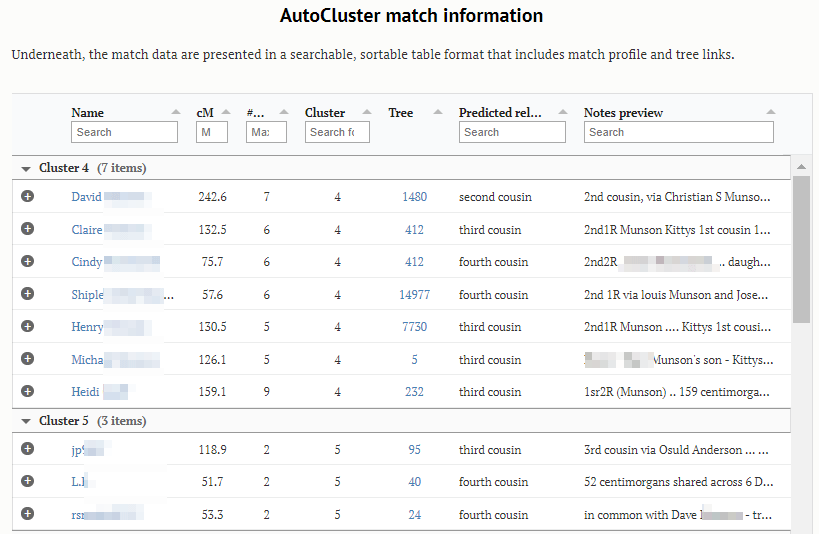My genealogy groups are buzzing with excitement about a new tool from Genetic Affairs to automate the clustering of your DNA matches. This takes the Leeds method concept to another level.
Everyone is posting pretty cluster pictures like the one below that I made for my perfect cousin, the star of many of my blog posts. This is a table where each DNA match is listed on the top and side; then if they match each other, the box is colored in with the color for that cluster. The chart is sorted by cluster. The idea is that each colored cluster shows descendants from a probable great grandparent couple of yours.
The gray boxes show where people match others outside the cluster which can often happen when families intermarry more than once or when they are first cousins enough times removed to have been in the second or third cousin group by DNA but are related to more than one set of great grandparents.
Automated clustering is useful because it puts your DNA relatives who are related to each other into visual groups so that you can quickly see which line a new match is related on. The picture is pretty but the workhorses are the charts for each cluster shown below that image when you scroll down. Here is the privatized one for my “perfect” cousin showing our MUNSON cluster.

Each name can be clicked to go to that Ancestry match page plus much useful additional information is shown next to the username: how many cMs shared, how many matches shared in the whole group, cluster number, how many people in their tree, and the notes you made for that match.
The image and charts are from the HTML file which arrived via email from Genetic Affairs after I requested automated clustering for my cousin’s Ancestry profile, which is shared with me there. You have to save the html file to your computer and then click on it to view it. When it first comes up, it is a mish-mosh sorted by name, but then it resorts itself by cluster. Fun to watch. Click here for the step by step of how to use this tool from the Intrepid Sleuth. It can also cluster matches from other sites like 23andme.
I decided to try it on an unknown father case I had not gotten around to working on yet, to see if it succeeded in speeding up the process and it did, to under an hour! A new record.